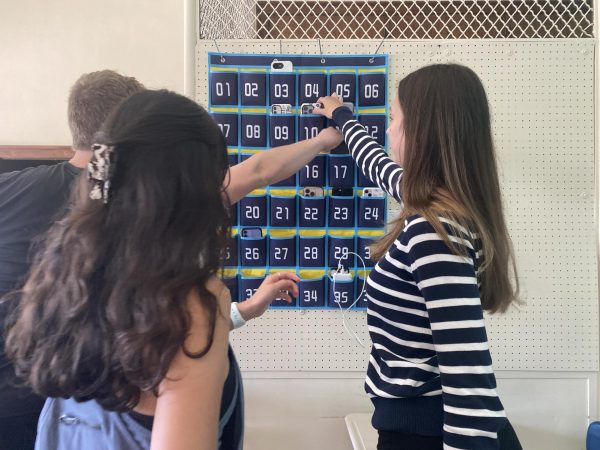The battle behind the dance: I-Days evals spark friendly competition
India Club practicing in the dance room. This year they received the second place spot with a score of 39.3 (Aisha Sayeed)
International Days at Lane have become a staple in the school’s community. The two-day celebration of culture is highly anticipated by dancers and spectators alike. However, something that is not as known by the student population is the judging and scoring of the dances, which will determine their ranking as an I-Days club.
The club evaluations usually take place one to two weeks before I-Days themselves. Each club performs their dance for a panel of judges, who will then score them on a 40 point scale. The panel is comprised of the student council and the student council’s executive board, according to Assistant Principal Ms. Hanly, who has led the process alongside student council since 2013.
“It actually wasn’t until [2014] that we had a proper rubric,” Hanly said. “We really wanted to make it more of an official thing, more than just ‘I like you.’”
The rubric consists of an overall point system based off of individual categories. Aspects of a performance that Hanly looks for in particular include cultural relevance and tightness in the routine, as well as overall stage presence.
Using the rubric, she talks to the clubs individually to let them know how their performance may be improved prior to the event to ensure an engaging show throughout.
“The audience has paid to see a show, so you better give them a show,” Hanly said. “You should be smiling and looking like you’re enjoying yourself.”
However, the scoring process can add additional stress on the dancers, according to Sophia Pizarro, Div. 062, who dances for Filipino Club.
The evaluation process determines not only where a club is placed in the order for the I-Nights show, but also how many times a club performs on I-Days, according to Pizarro.
Many clubs have more intense practices in the weeks leading up to evaluations to ensure a spot at the top. For Pizarro’s club, this means longer practices and full schedules.
“Especially leading up to evaluations, it gets pretty chaotic,” Pizarro said. “In the week before evals, everyone is busy because they are all trying to get a practice space in the lunchroom or getting the rest of their dances perfect for their evaluation.”
To add on to the stress induced by being scored, evaluations also bring about a more competitive side of the dancers.
President of India Club, Bryanna Rubi, Div. 969, said that evaluations have become a way for clubs to have some friendly competition, as it all comes down to each club performing their best to see who will come out on top.
“To a certain extent, a lot of clubs just don’t care, but there’s a good half that do,” Rubi said. “India Club is one of them, just because we’ve been at the top for quite a while, so it’s a lot of stress to make sure that we live up to those standards.”
For Rubi and her club, living up to these standards means back-to-back practices and comparing their dance to the evaluation rubric in order to maximize points. However, at the end of the day, Rubi knows that I-Days is not a competition, but rather a showcase of culture and hard work.
“Everyone wants to be the best, but at some point, it shouldn’t really matter too much,” Rubi said. “Regardless of the score your club receives, you’re there to put on a show that people will love, and that’s what counts.”
Your donations directly fund the Lane Tech student journalism program—covering essential costs like website hosting and technology not supported by our school or district. Your generosity empowers our student reporters to investigate, write, and publish impactful stories that matter to our school community.
This website is more than a publishing platform—it's an archive, a research tool, and a source of truth. Every dollar helps us preserve and grow this resource so future students can learn from and build on the work being done today.
Thank you for supporting the next generation of journalists at Lane Tech College Prep!

Ela Messina is a senior at Lane. Aside from writing and editing for The Warrior, Ela enjoys cooking with her sisters and going on runs with her dog, Lucy....




